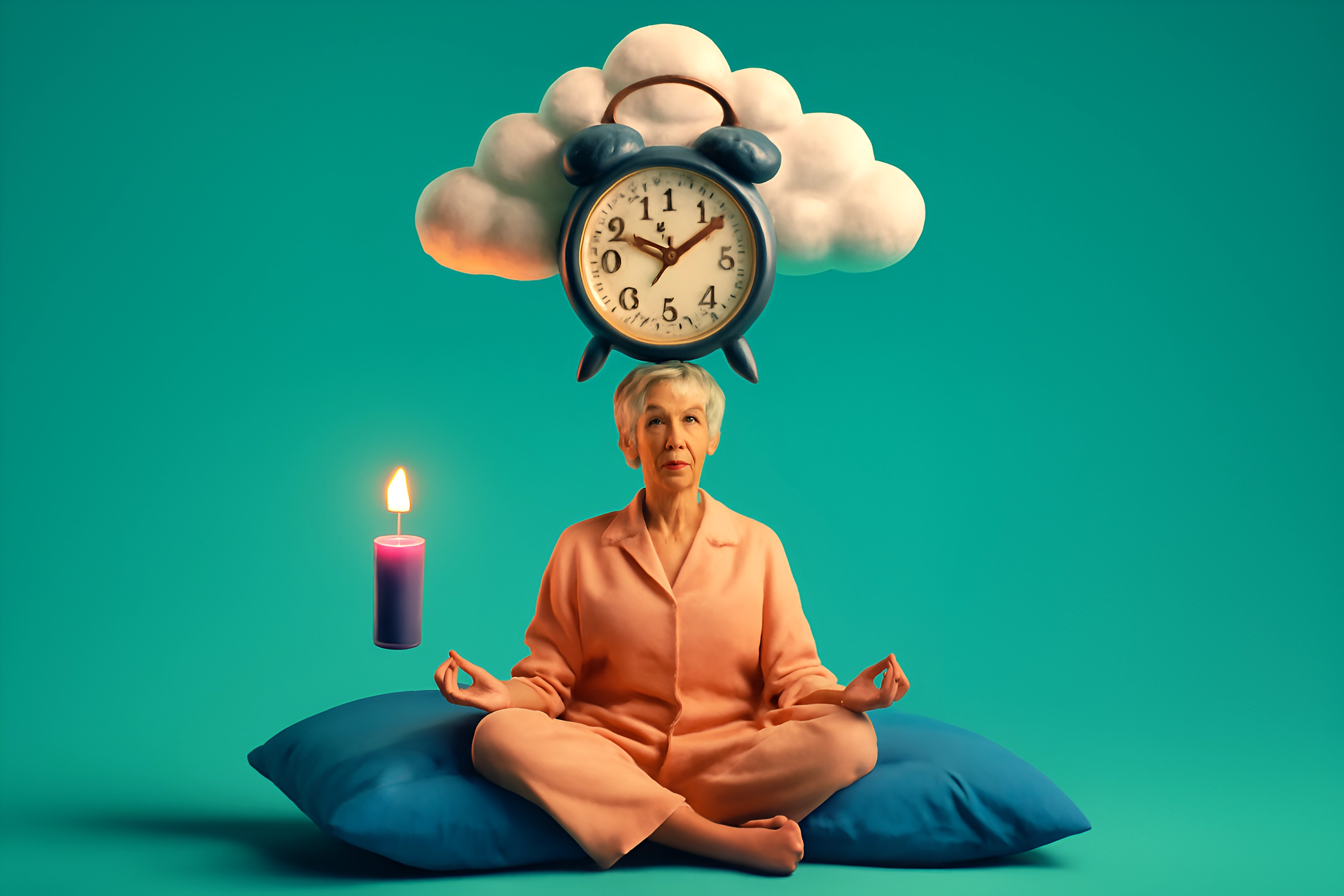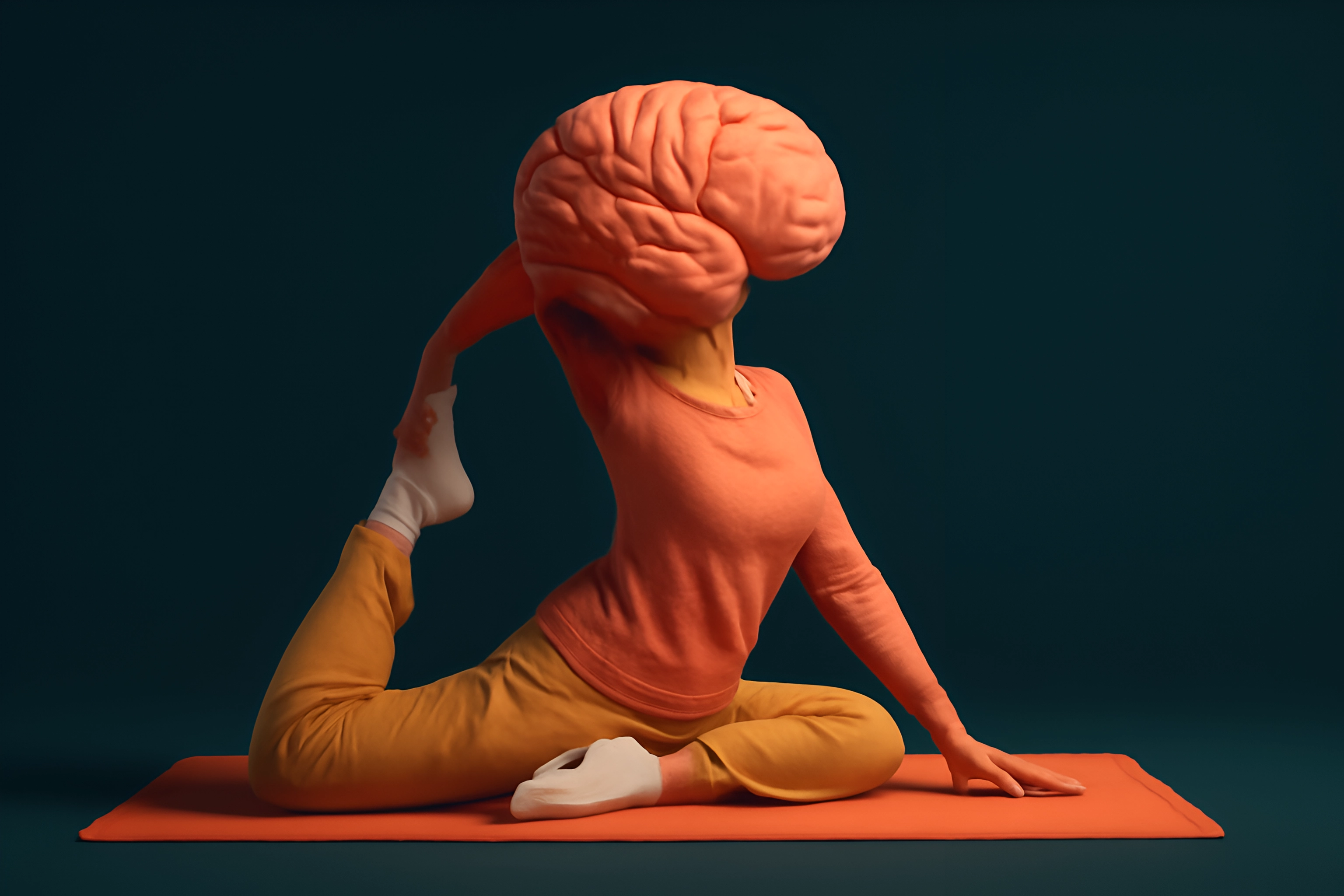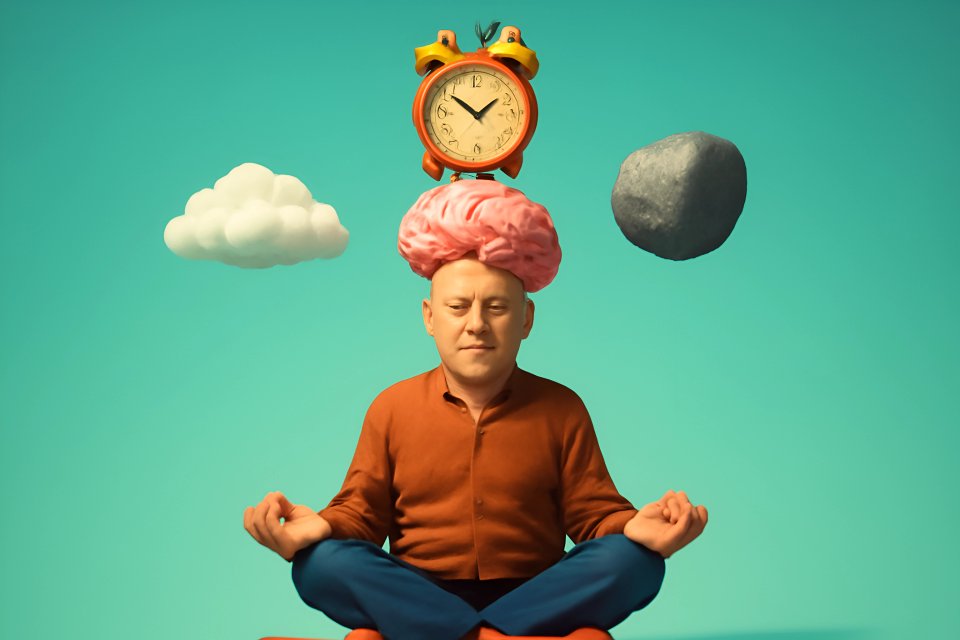
Is 3 AM your new, unwelcome wake-up call? You’re not alone. As we navigate life after 50, a full night of deep, restorative sleep can sometimes feel like a distant memory, a luxury from a bygone era. The tossing, the turning, the racing mind—it’s a frustrating cycle that can leave you feeling drained before your day has even begun.
This isn't a personal failing; it's a shared challenge. The truth is, our bodies and sleep patterns naturally evolve. But what if you could gently, powerfully reclaim your nights? What if the key wasn't a pill, but a practice? This is where a mindful evening routine becomes your greatest ally—not as another chore on your to-do list, but as a profound act of self-care and a direct investment in your vitality.
This guide will walk you through understanding why your sleep has changed and provide a simple, step-by-step framework to build a personalized evening ritual. It's time to stop fighting for sleep and start inviting it in. Let's rediscover the peace of a truly restful night.
Why Does Sleep Change After 50? (And Why Mindfulness is the Answer)
It’s not your imagination—the rules of sleep seem to change as we get older. One of the primary drivers is hormonal shifts. For women navigating menopause, declining estrogen can lead to night sweats and other disruptions, with studies showing that nearly 68% of postmenopausal women are classified as "poor sleepers." Men aren't exempt; the gradual decline in testosterone associated with andropause can also fragment sleep and reduce its efficiency.
Beyond hormones, our internal body clock, or circadian rhythm, begins to shift. The part of our brain that acts as our master clock, the suprachiasmatic nucleus (SCN), becomes less robust with age. This can cause you to feel tired earlier in the evening and wake up long before the sun, a phenomenon known as phase advancement. Research from the Sleep Foundation highlights that these biological shifts are a normal part of aging, but they don't reduce our fundamental need for 7-8 hours of quality rest.
This is where mindfulness becomes the ultimate solution. When your mind is racing with worries about health, family, or finances, your body enters a state of high alert, or "fight or flight," flooding your system with the stress hormone cortisol. Mindfulness practices are scientifically proven to shift your nervous system into a "rest and digest" state, creating the perfect internal conditions for sleep. A groundbreaking study found that mindful meditation significantly improves sleep quality in older adults, even more so than standard sleep hygiene education, because it directly addresses the root cause: a stressed and overactive mind.
Your Step-by-Step Guide to a Mindful Evening Routine
Think of the following steps not as a rigid prescription, but as a menu of calming options. Your mission is to choose what resonates most with you and craft a personal ritual that feels like a gift to yourself. The goal is consistency, not perfection.
Step 1: The Digital Sunset (60-90 Minutes Before Bed)
The first, most critical action is to declare a digital sunset. This means powering down all screens—the television, your tablet, and especially your phone. It’s a non-negotiable step for true rest.
The reason is twofold. First, the blue light emitted from these devices is a notorious saboteur of sleep, as it directly suppresses your body's production of melatonin, the hormone that signals it's time to rest. But more importantly from a mindful perspective, the constant stream of news, emails, and social media keeps your brain in a hyper-alert, problem-solving mode. You cannot expect your mind to peacefully drift off to sleep when it’s been trained to be on all day and all night.
Instead of scrolling, use this time to reconnect with the analog world. Pick up a physical book (not a backlit e-reader). Listen to calming music or an interesting podcast. Better yet, have a real, screen-free conversation with your partner or a friend. This simple act of unplugging sends a powerful message to your brain: the day is done.
Step 2: Gentle Movement to Release the Day (10-15 Minutes)
Now it's time to release the physical tension your body has been holding onto all day. This isn't about a workout; it's about a "work-in." A short session of gentle, floor-based stretches can work wonders for preparing your body for deep rest.
The mindful purpose here is to synchronize your breath with your movement. As you stretch your hips, shoulders, and back, you are physically embodying the act of letting go. This practice helps release stored stress from your muscles and connective tissues, calming your nervous system and quieting the physical "noise" that can keep you awake.
For a simple and safe routine, try a few foundational poses. A gentle Cat-Cow can release tension in the spine, while Child's Pose is deeply calming for the nervous system. A Supine Spinal Twist can help unwind tightness in the lower back and hips. Remember the golden rule: no pain, only gentle release. For more ideas, you can explore a full range of safe, low-impact exercises that improve flexibility and prepare your body for rest.
Step 3: A Moment of Quiet Reflection (5-10 Minutes)
With your body calmer, it's time to tend to your mind. This step is designed to directly counteract a racing brain, giving your thoughts a place to land softly instead of spinning out of control. Choose one simple practice that feels accessible and enjoyable to you.
The goal is to interrupt the cycle of worry and rumination that so often sabotages sleep. By intentionally focusing your attention, you are training your brain to be present rather than lost in anxieties about the past or future. This is the core of how you can actively improve sleep quality over 50.
Here are three powerful options:
- Deep Breathing: Try the
4-7-8 breathingtechnique. Inhale through your nose for 4 seconds, hold your breath for 7 seconds, and exhale slowly through your mouth for 8 seconds. This simple practice is a powerful tool for calming the nervous system. - Guided Meditation: You don't have to empty your mind. Let an app or audio track guide you through a 5-minute sleep meditation. Studies show this is incredibly effective for older adults.
- Gratitude Journaling: Before bed, write down three specific things you were grateful for during the day. This simple act has been shown to shift your focus from worry to positivity, priming your brain for peaceful rest.
Step 4: Create Your Sleep Sanctuary
Finally, you must ensure your bedroom environment is sending the right signals to your brain. Your bedroom should be a sanctuary dedicated to sleep and intimacy, and nothing else. This is one of the most crucial sleep optimization tips for older adults.
A calm, optimized space reinforces all your other mindful efforts. When you walk into a room that is cool, dark, and quiet, your brain receives a powerful, instinctual cue that it is time to power down and enter a state of rest. This isn't about luxury; it's about biology.
Use this simple checklist to transform your bedroom into the ultimate sleep sanctuary.
| Element | Optimal Setting | The Mindful Reason |
|---|---|---|
| Cool | 60-67°F (15-19°C) | Your body temperature needs to drop to initiate sleep. A cool room facilitates this natural process. |
| Dark | As dark as possible | Use blackout curtains or an eye mask. Even tiny amounts of light can disrupt melatonin production. |
| Quiet | Silent or consistent noise | Eliminate disruptive sounds. Consider earplugs or a white noise machine to mask interruptions. |
| Comfort | Supportive & cozy | Ensure your mattress and pillows support your body's needs to prevent aches and pains from waking you. |
Frequently Asked Questions (FAQs) for Better Sleep After 50
How long should my evening routine be?
Consistency is far more important than duration. Start with a manageable 20-30 minutes each night. Even 15 minutes of intentional, mindful winding down can make a profound difference in signaling to your body that it's time for sleep.
What if I wake up in the middle of the night?
First, resist the urge to look at your phone or the clock, as this often triggers anxiety. Stay in bed and try a simple breathing exercise, like the 4-7-8 technique. If you are still wide awake after 20 minutes, it's best to get up, go to another dimly lit room, and read a physical book until you feel sleepy again, then return to bed.
Are there any foods or drinks that can help with sleep?
Absolutely. A warm cup of chamomile tea is a classic for a reason. A small banana or a handful of almonds can also be beneficial, as they contain magnesium and other nutrients that support relaxation. The key is to avoid heavy meals, caffeine, and alcohol in the final few hours before bed, as these can severely disrupt sleep architecture. For more ideas, explore our guide on age-defying nutrition for overall wellness.
Your Best Days Start the Night Before
Let's be clear: a mindful evening routine is one of the most powerful and accessible tools you have for reclaiming your health and vitality. By consciously choosing to unplug, stretch gently, breathe deeply, and prepare your space, you are taking back control from the anxieties and biological shifts that can disrupt your rest.
Investing in your sleep is one of the greatest acts of self-care you can practice. By creating a peaceful end to your day, you’re not just setting yourself up for a restful night—you’re paving the way for a more energetic, vibrant, and fulfilling day tomorrow. You deserve to feel rested and ready to live life to the fullest.
What is one mindful habit you’re excited to add to your evening routine? Share your thoughts in the comments below

















